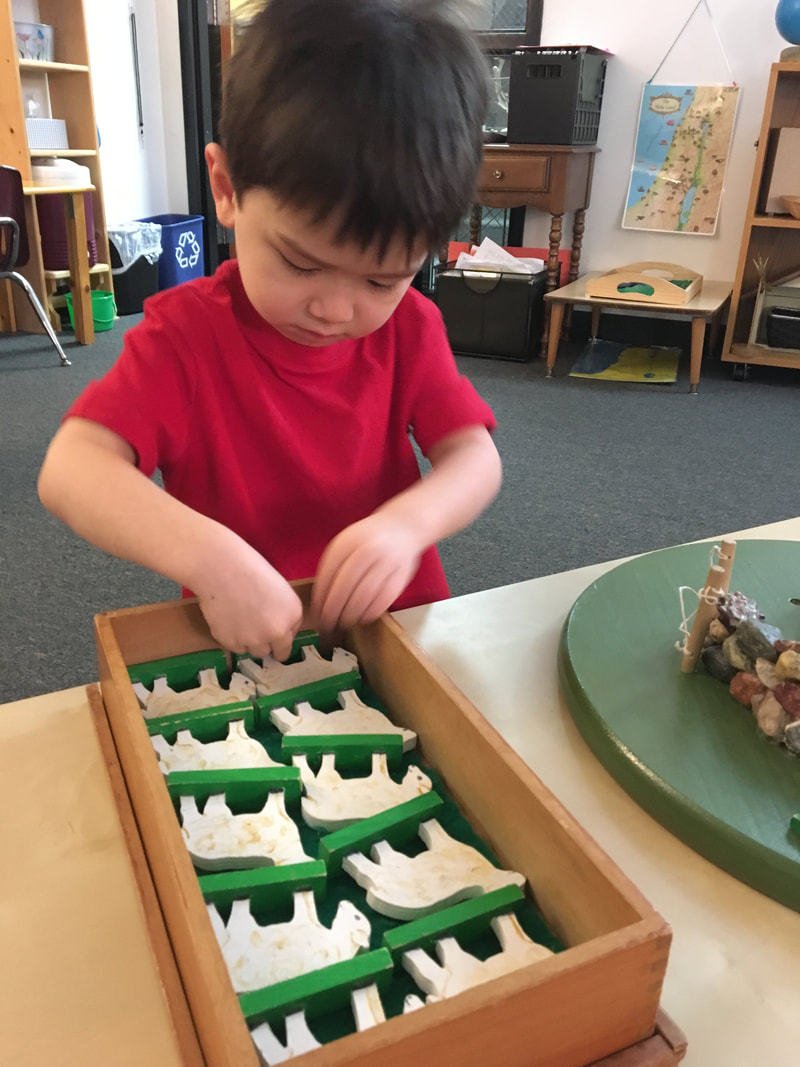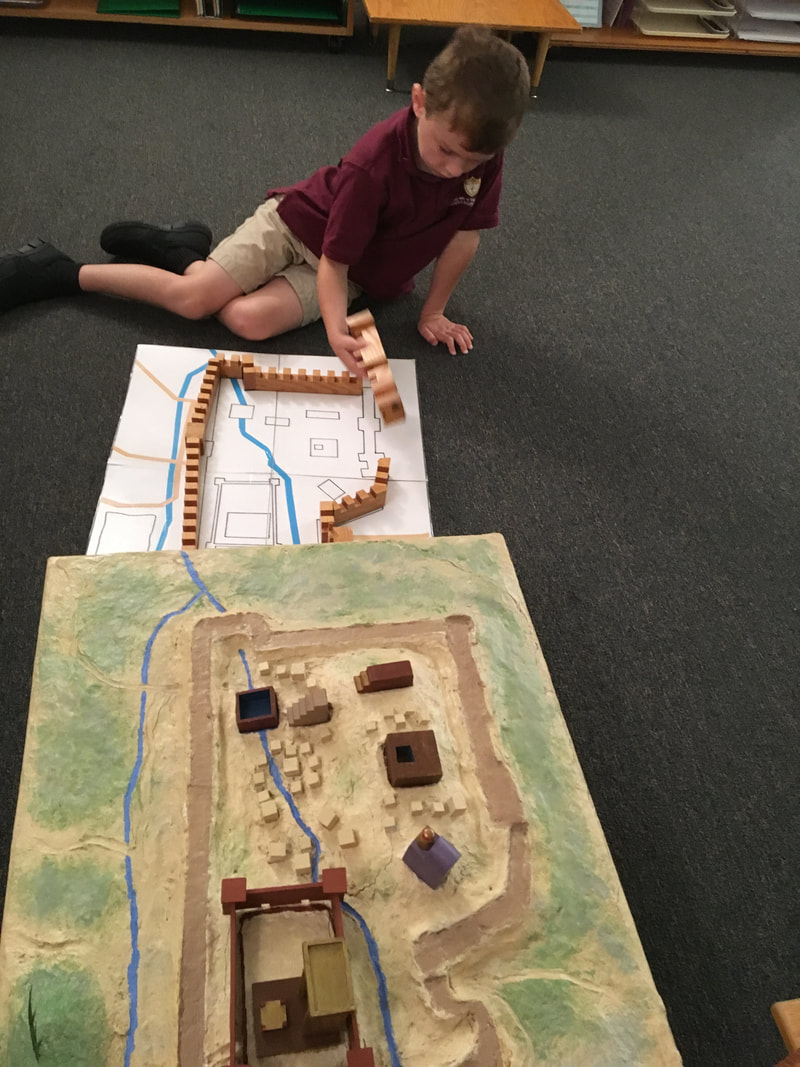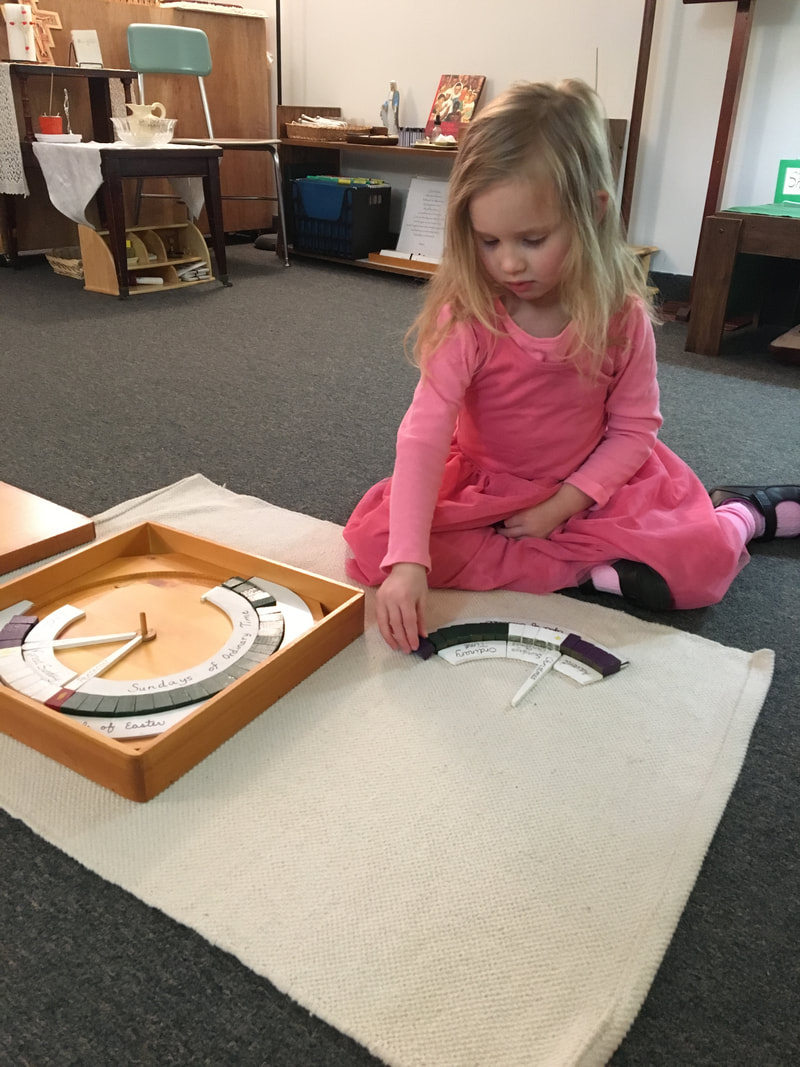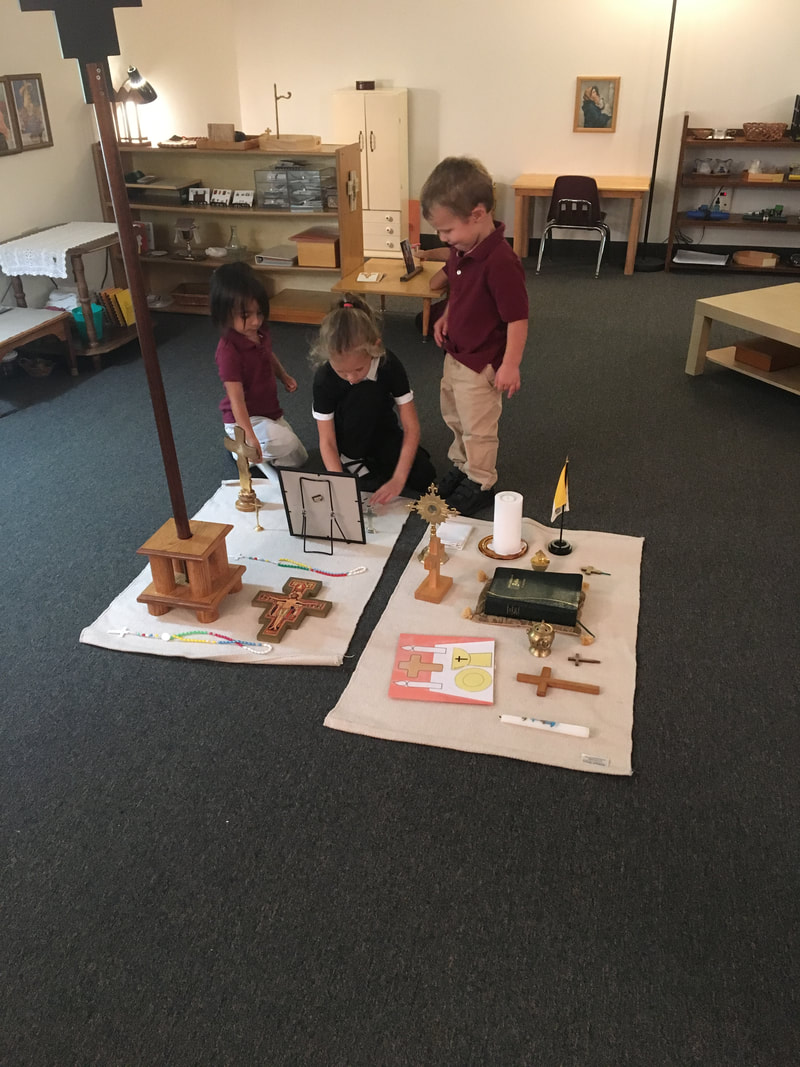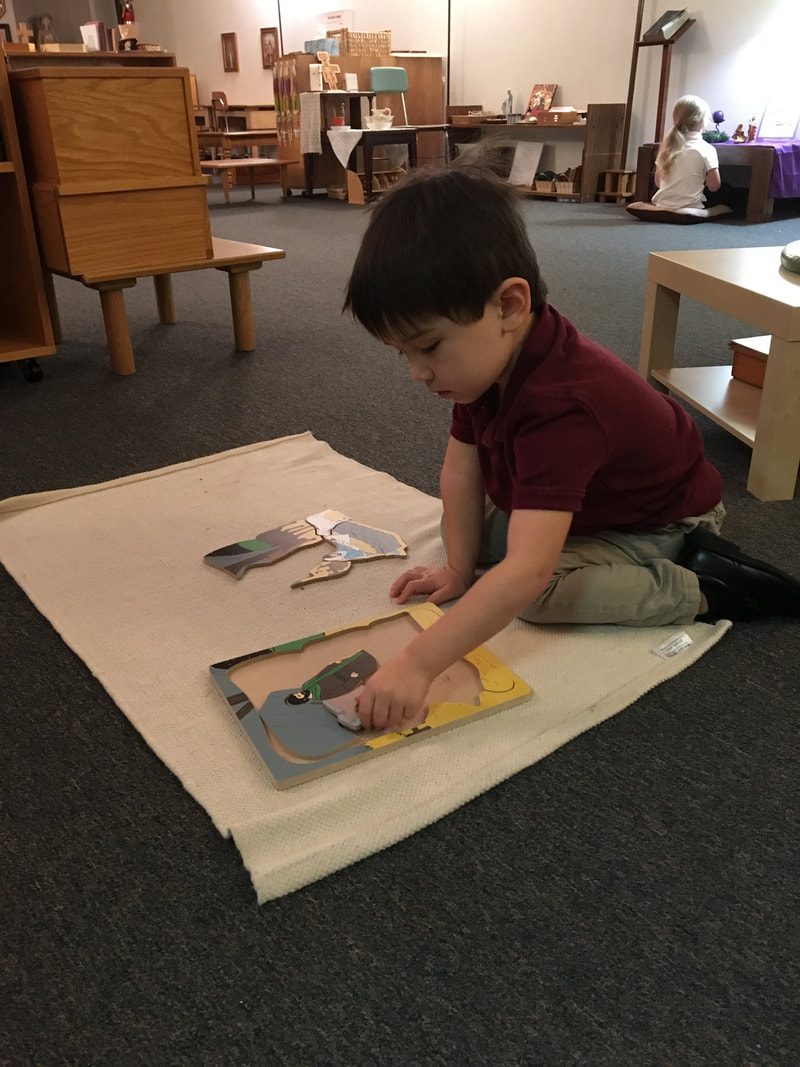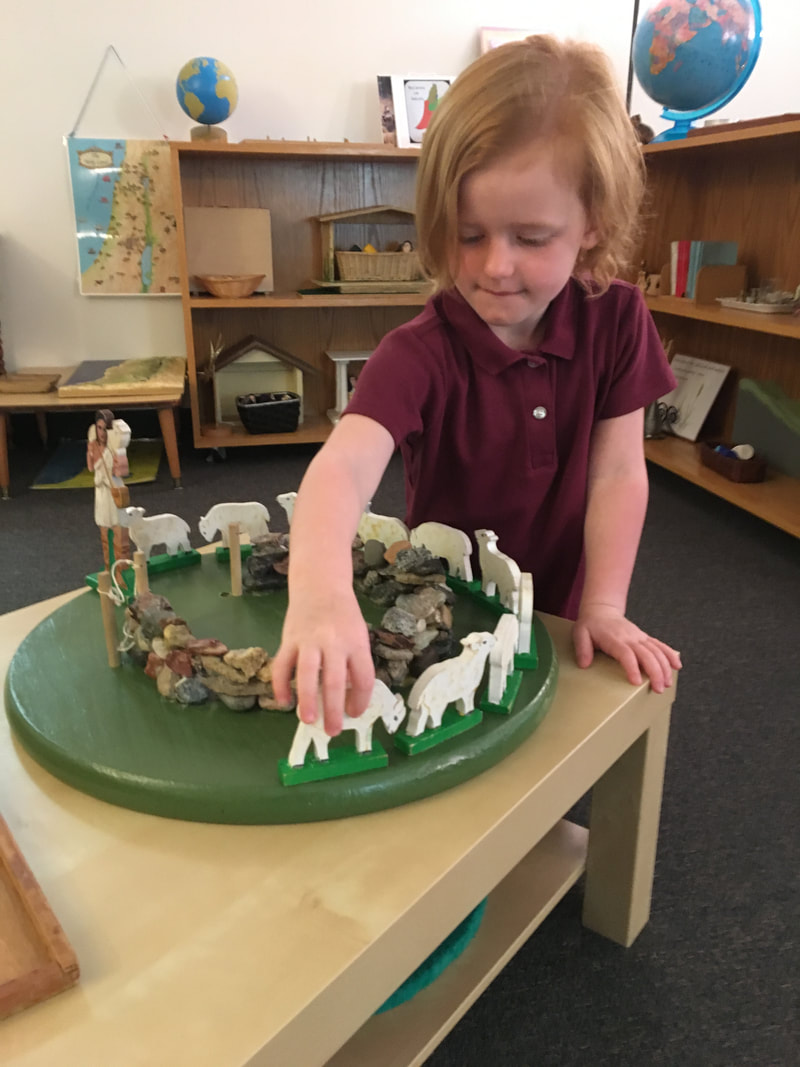Dr. Montessori observed that young children are in a time of particular sensitivity to specific parts of the environment. These “sensitive periods,” as she called them, are characterized by interest, concentration, and repetition. They leave the child refreshed and energized even though the activity in which the child is involved may be intense and prolonged. Four primary sensitive periods recognized by Dr. Montessori for the child of 3-6 years include language, order, refinement of the senses, and refinement of movement.
The child of this young age is developing a sense of both internal and external order. That is why it is so important to have a clear order within the Atrium environment. Each shelf has a specific “subject” as its theme and the materials are set on it from left to right, top to bottom, simple to complex, in the order they will be presented to the child. Each material has a specific purpose, placement, and “look.” For the child, the more the environment is ordered, the easier it is for them to grasp the essence of what is to be proclaimed.
|
|
|

